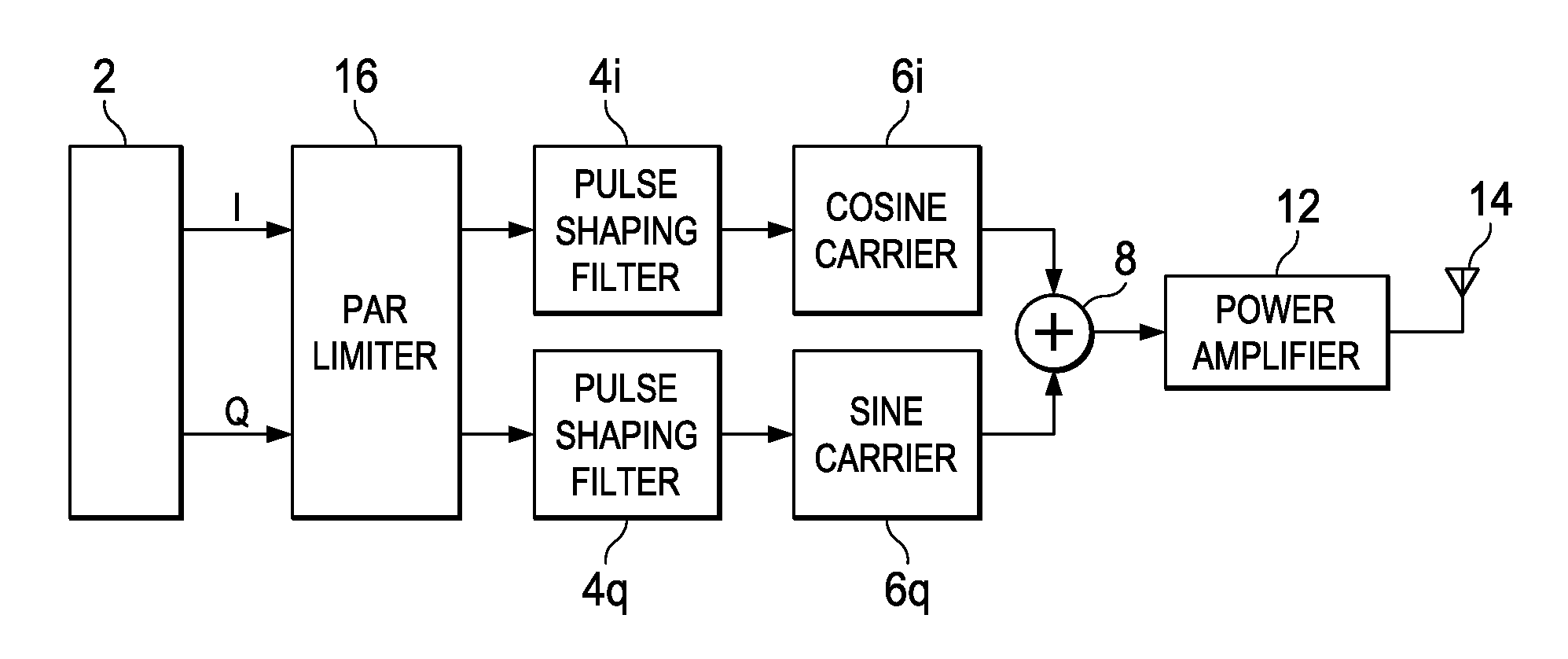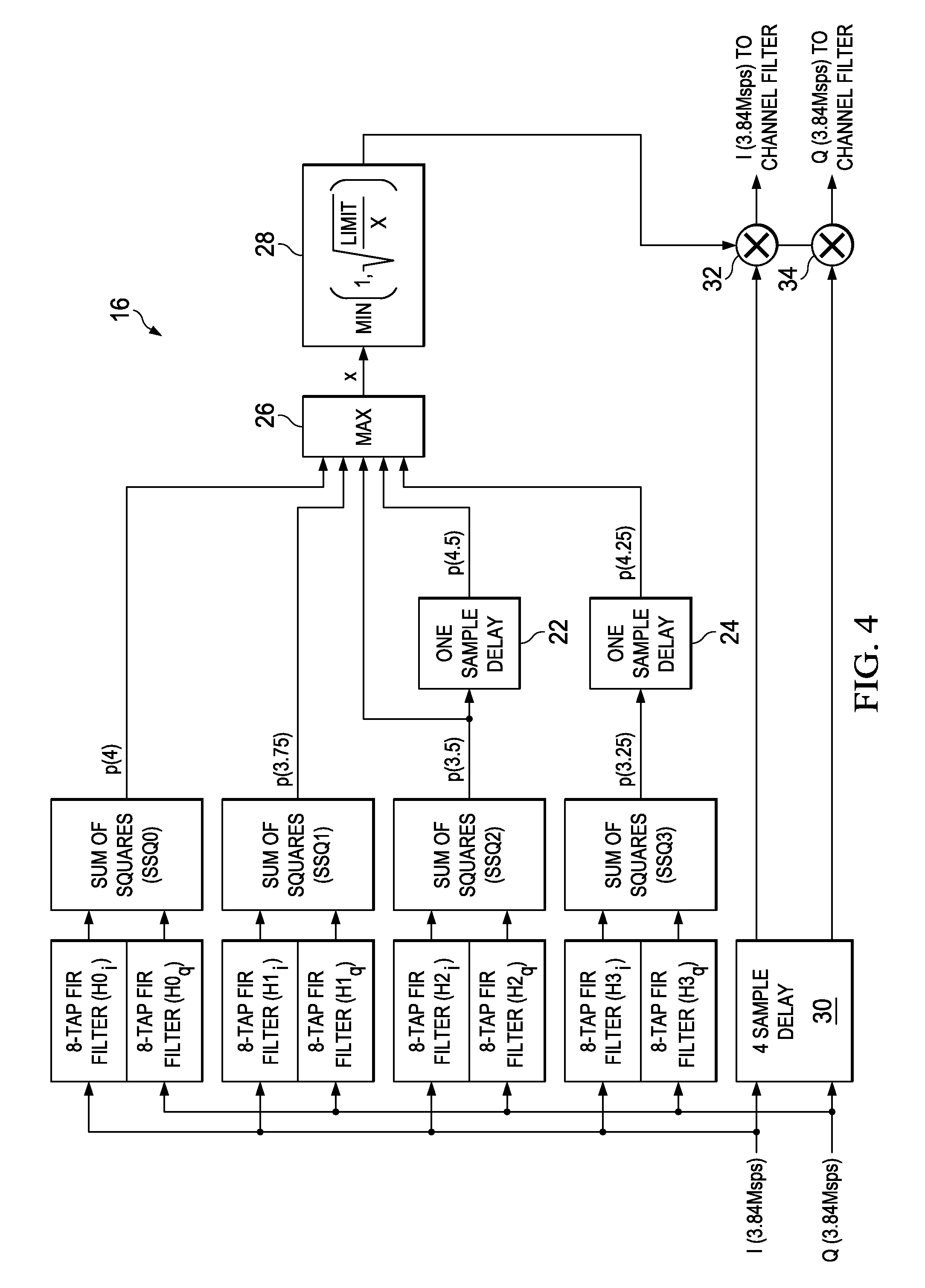Transmitting a signal from a power amplifier
a power amplifier and signal technology, applied in the direction of digital transmission, limiting the amplitude of digital/coded signals, baseband system details, etc., can solve the problems of increasing adjacent channel leakage and distortion, high computational complexity of the scheme, and incurring a high processing burden in terms of processing cycles
- Summary
- Abstract
- Description
- Claims
- Application Information
AI Technical Summary
Benefits of technology
Problems solved by technology
Method used
Image
Examples
Embodiment Construction
[0028]The disclosure recognizes the benefit of a practical peak-to-average ratio (PAR) power limiter which can operate with reduced computational complexity compared to conventional PAR power limiters but with little or no ACLR degradation. Additionally, the disclosure also recognizes the benefit of operating such a power limiter on the uplink while still meeting the strict ACLM and EVM restrictions.
[0029]As mentioned, Marsili proposes a pre-processing scheme for limiting the peak-to-average power ratio (PAR). However, the Marsili scheme is complicated to implement, and hence incurs a high processing burden. Particularly, the technique in Marsili requires calculating the amplitude of four interpolated signals (requiring four square root operations), determining four sets of complex additive correction terms (ei=1 . . . 4), filtering those terms to time align them with the original signal value, and finally, selecting the maximum of the four filtered complex correction terms for subt...
PUM
 Login to View More
Login to View More Abstract
Description
Claims
Application Information
 Login to View More
Login to View More - R&D
- Intellectual Property
- Life Sciences
- Materials
- Tech Scout
- Unparalleled Data Quality
- Higher Quality Content
- 60% Fewer Hallucinations
Browse by: Latest US Patents, China's latest patents, Technical Efficacy Thesaurus, Application Domain, Technology Topic, Popular Technical Reports.
© 2025 PatSnap. All rights reserved.Legal|Privacy policy|Modern Slavery Act Transparency Statement|Sitemap|About US| Contact US: help@patsnap.com



